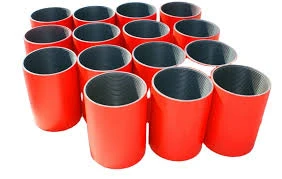- Afrikaans
- Albanian
- Amharic
- Arabic
- Armenian
- Azerbaijani
- Basque
- Belarusian
- Bengali
- Bosnian
- Bulgarian
- Catalan
- Cebuano
- Corsican
- Croatian
- Czech
- Danish
- Dutch
- English
- Esperanto
- Estonian
- Finnish
- French
- Frisian
- Galician
- Georgian
- German
- Greek
- Gujarati
- Haitian Creole
- hausa
- hawaiian
- Hebrew
- Hindi
- Miao
- Hungarian
- Icelandic
- igbo
- Indonesian
- irish
- Italian
- Japanese
- Javanese
- Kannada
- kazakh
- Khmer
- Rwandese
- Korean
- Kurdish
- Kyrgyz
- Lao
- Latin
- Latvian
- Lithuanian
- Luxembourgish
- Macedonian
- Malgashi
- Malay
- Malayalam
- Maltese
- Maori
- Marathi
- Mongolian
- Myanmar
- Nepali
- Norwegian
- Norwegian
- Occitan
- Pashto
- Persian
- Polish
- Portuguese
- Punjabi
- Romanian
- Russian
- Samoan
- Scottish Gaelic
- Serbian
- Sesotho
- Shona
- Sindhi
- Sinhala
- Slovak
- Slovenian
- Somali
- Spanish
- Sundanese
- Swahili
- Swedish
- Tagalog
- Tajik
- Tamil
- Tatar
- Telugu
- Thai
- Turkish
- Turkmen
- Ukrainian
- Urdu
- Uighur
- Uzbek
- Vietnamese
- Welsh
- Bantu
- Yiddish
- Yoruba
- Zulu
Stainless Steel Couplings for Reliable and Durable Fittings in Various Applications
Understanding Coupling Stainless Steel Fittings A Comprehensive Guide
In the realm of plumbing and piping systems, coupling fittings play a crucial role in connecting two sections of pipes or tubes, ensuring a seamless flow of fluids and gases. Among various materials available for these fittings, stainless steel has become a popular choice due to its durability, corrosion resistance, and strength. This article delves into the significance of coupling stainless steel fittings, exploring their applications, advantages, and maintenance.
What are Coupling Stainless Steel Fittings?
Coupling stainless steel fittings are specialized components designed to join two pieces of pipe together. They can be found in various configurations, including straight couplings, reducing couplings, and flexible couplings. The primary function of these fittings is to provide a secure and leak-proof connection that can withstand high pressures and temperatures.
Stainless steel is often selected for these fittings due to its excellent mechanical properties and ability to resist rust and corrosion. This quality is particularly important in industries where exposure to harsh environments or chemicals is common, such as in oil and gas, pharmaceutical production, and food processing.
Advantages of Coupling Stainless Steel Fittings
1. Corrosion Resistance One of the most significant benefits of stainless steel fittings is their resistance to corrosion. Unlike other materials, such as carbon steel, stainless steel does not rust or deteriorate when exposed to moisture or corrosive substances. This property extends the lifespan of the fittings and reduces the need for frequent replacements.
2. Durability Stainless steel fittings are built to last. They can withstand high temperatures and pressures, making them ideal for demanding applications. This level of durability ensures that the piping system operates effectively over the long term.
coupling stainless steel fitting

3. Versatility Coupling stainless steel fittings come in a variety of sizes and shapes, allowing for compatibility with various pipe dimensions and configurations. This versatility makes them suitable for a wide range of industries, including construction, HVAC, and automotive.
4. Hygienic Properties In industries such as food and beverage, hygiene is paramount. Stainless steel's non-porous surface prevents the growth of bacteria and other contaminants, ensuring that the transported fluids remain clean and safe.
5. Cost-Effective While the initial investment in stainless steel fittings may be higher than that of other materials, their long-term benefits often translate to cost savings. Their durability and resistance to wear and tear reduce maintenance costs and the frequency of repairs.
Maintenance of Coupling Stainless Steel Fittings
Proper maintenance is essential to ensure the longevity and efficacy of coupling stainless steel fittings. Regular inspections should be conducted to check for signs of wear, leaks, or corrosion. Cleaning fittings periodically with mild detergents and avoiding harsh chemicals will help preserve their surface integrity.
Additionally, it's important to ensure that the fittings are correctly installed. Over-tightening or using incompatible materials can lead to damage and leaks. Consulting with professionals during installation can mitigate these risks.
Conclusion
Coupling stainless steel fittings are integral components of modern piping systems, offering durability, reliability, and resistance to corrosion. Their versatility and hygienic properties make them a preferred choice across various industries. By understanding their benefits and adhering to proper maintenance practices, organizations can ensure efficient and long-lasting operations in their fluid transport systems.
-
Tubing Pup Joints: Essential Components for Oil and Gas OperationsNewsJul.10,2025
-
Pup Joints: Essential Components for Reliable Drilling OperationsNewsJul.10,2025
-
Pipe Couplings: Connecting Your World EfficientlyNewsJul.10,2025
-
Mastering Oilfield Operations with Quality Tubing and CasingNewsJul.10,2025
-
High-Quality Casing Couplings for Every NeedNewsJul.10,2025
-
Boost Your Drilling Efficiency with Premium Crossover Tools & Seating NipplesNewsJul.10,2025







